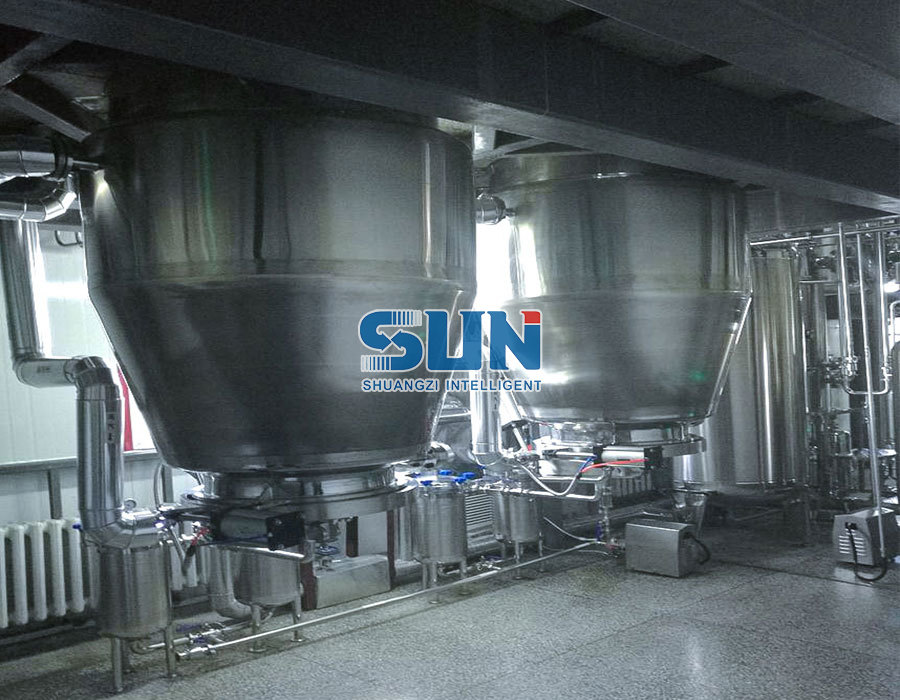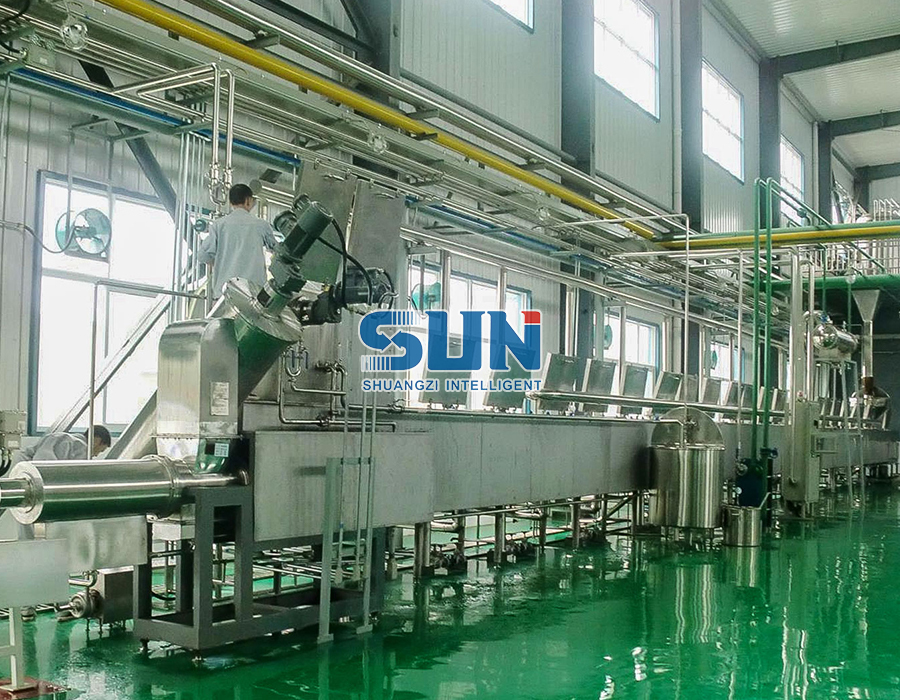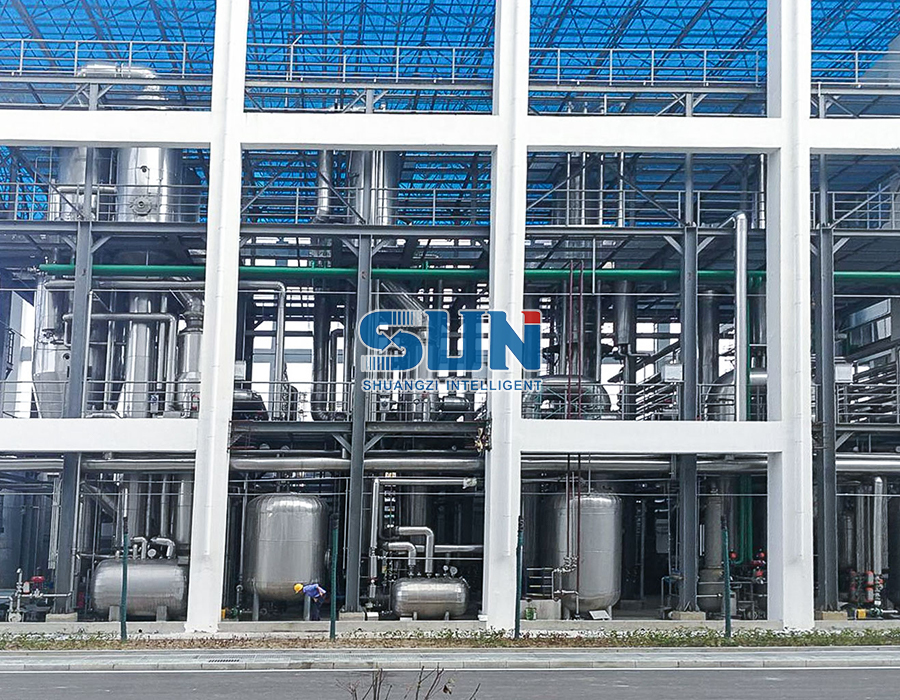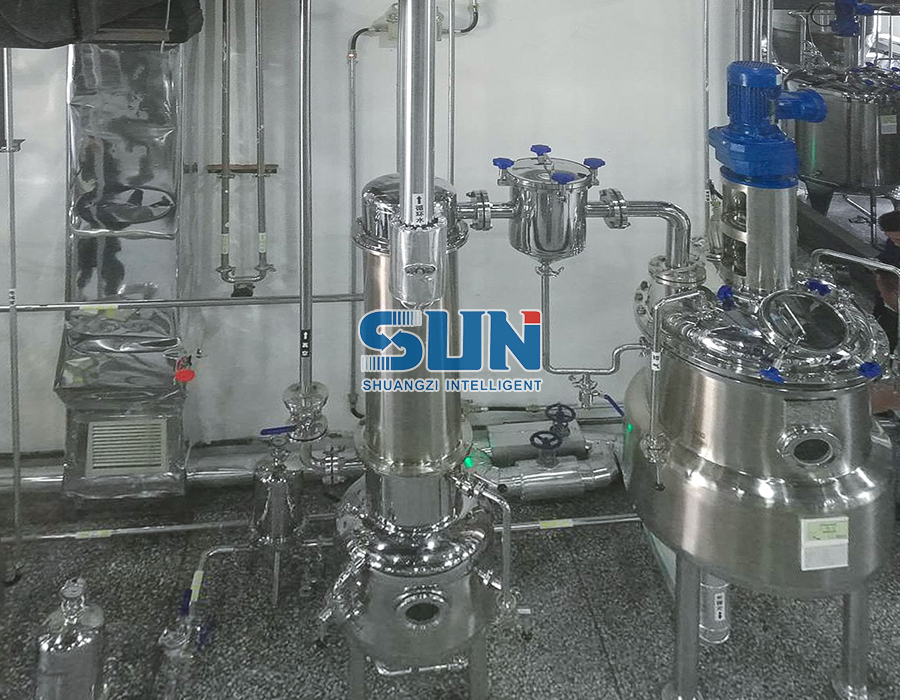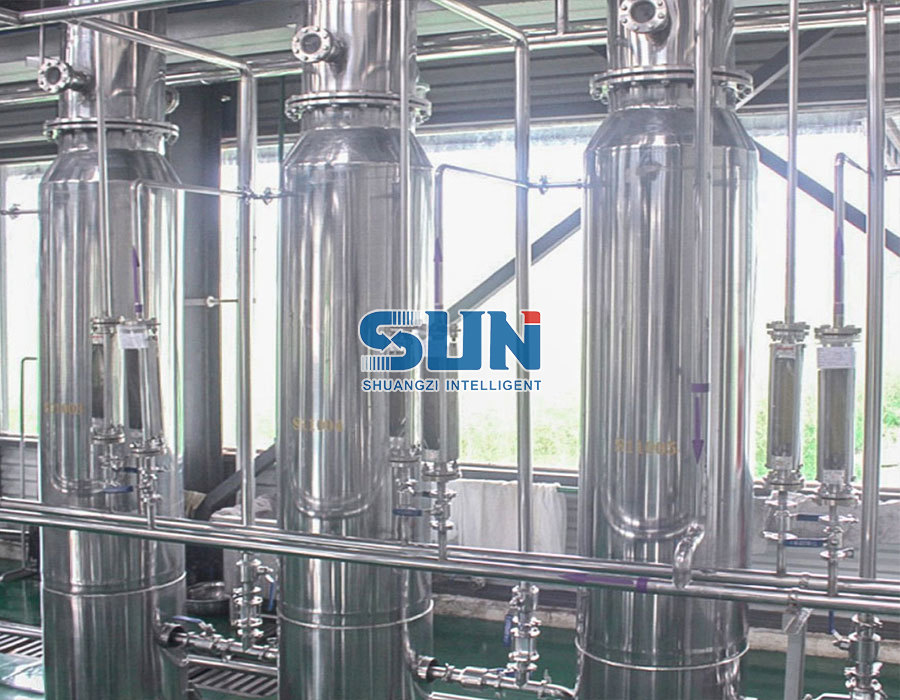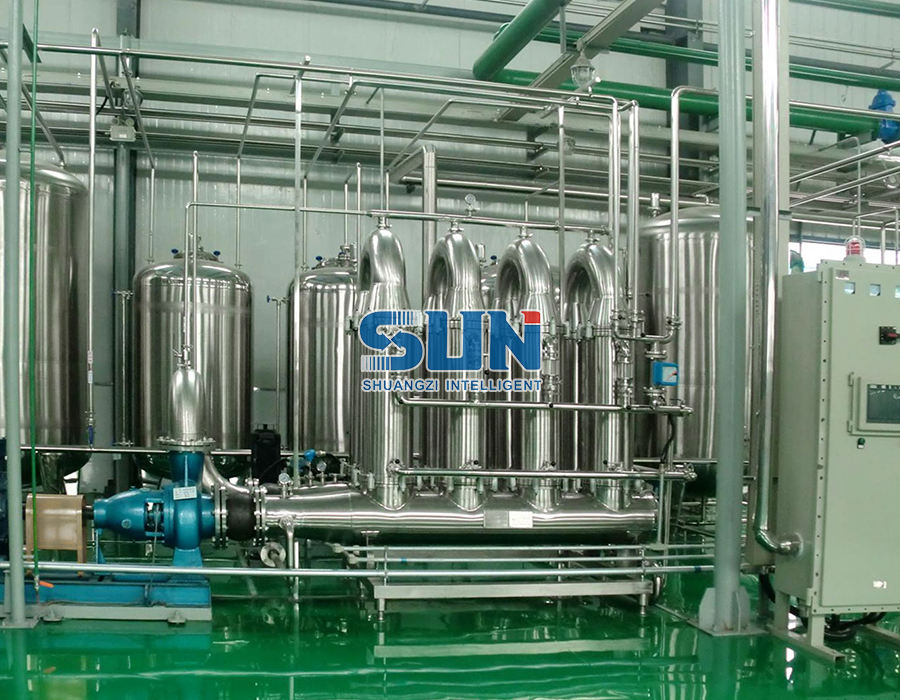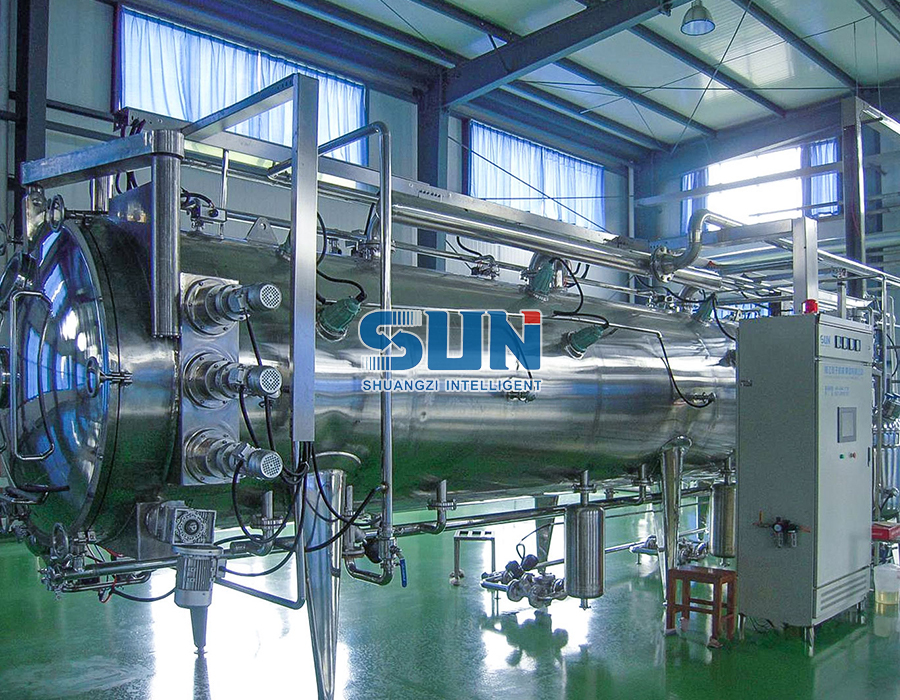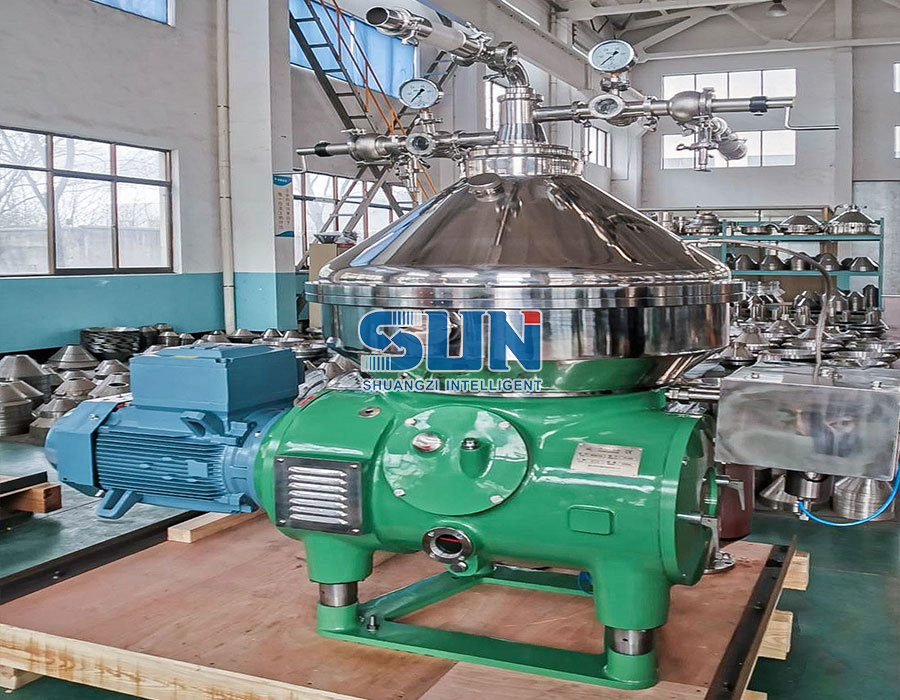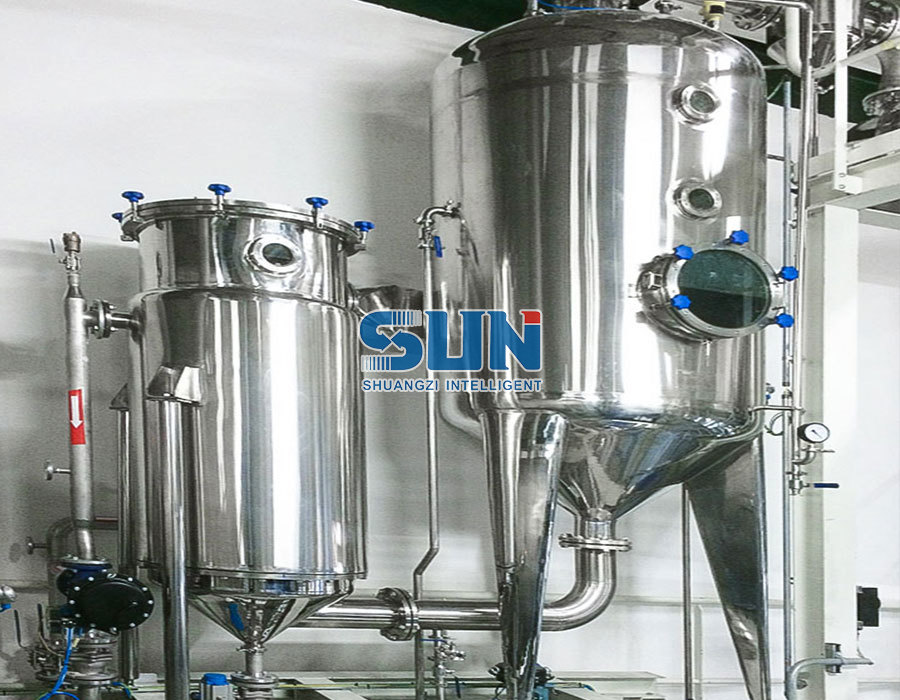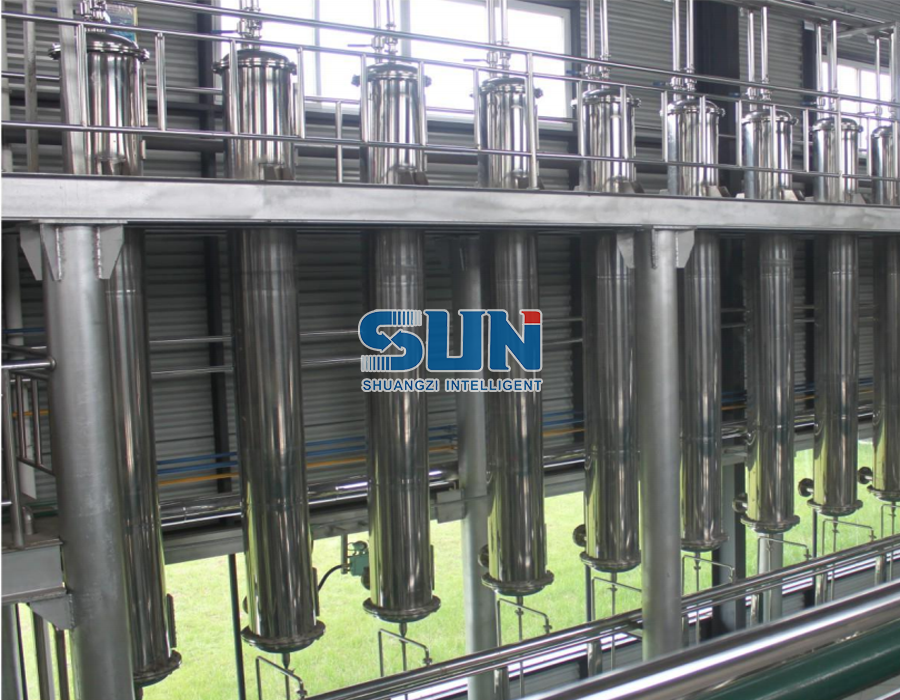A falling film evaporator is a type of evaporator used in various industries to separate liquids from solutions or suspensions. It operates on the principles of evaporation and heat transfer. The main operating principles of a falling film evaporator are as follows:
Heat transfer: The process begins by introducing a feed liquid into the evaporator. The liquid is preheated and then enters the evaporator's distribution system. Heat is applied to the liquid, typically through steam or hot water, which raises its temperature and causes evaporation to occur.
Film formation: The liquid flows down the inside surface of vertical heat transfer tubes or plates in the form of a thin film. The film is created by the gravitational force acting on the liquid as it flows downwards due to the design of the evaporator.
Heat exchange: As the liquid film flows down the heat transfer surface, it comes into contact with the hot surface, causing evaporation of the volatile components. Heat from the hot surface is transferred to the liquid film, facilitating the evaporation process.
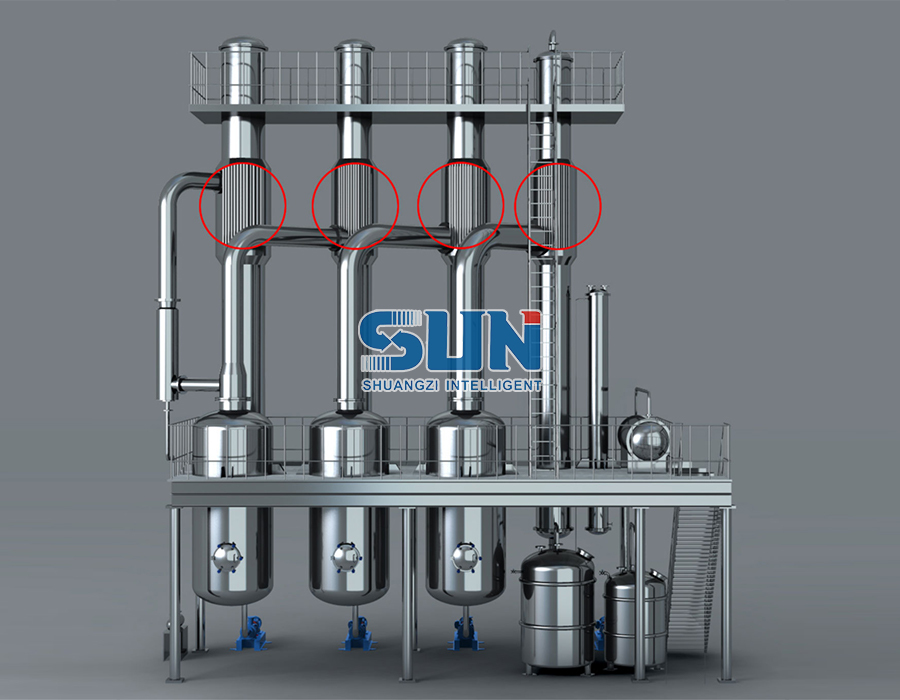

Vapor-liquid separation: The evaporated vapor rises due to buoyancy and flows countercurrently to the liquid film. This movement helps in the separation of vapor and liquid phases. The vapor exits the evaporator, while the remaining liquid, which is now concentrated, continues down the heat transfer surface.
Concentration and collection: The liquid film becomes progressively more concentrated as it moves down the evaporator. At the bottom, concentrated liquid is collected and removed from the system, while a portion may be recycled as the feed to maintain continuous operation.
Efficiency and energy optimization: Falling film evaporators are designed to maximize the efficiency of heat transfer while minimizing energy consumption. The thin film and countercurrent flow of vapor and liquid enhance heat transfer rates, allowing for high evaporation rates and energy-efficient operation.
The operating principles of a falling film evaporator involve heat transfer, film formation, vapor-liquid separation, concentration, and energy optimization. These principles enable the efficient separation of liquids from solutions or suspensions in various industrial processes.


 英语
英语 俄语
俄语